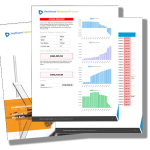Building a new home is a significant life milestone that often coincides with personal and economic challenges. When faced with a recession and higher interest rates, potential homeowners may find themselves hesitant and unsure of how to proceed. However, it’s essential to understand that despite economic downturns and financial uncertainties, homeownership remains a viable and rewarding goal. In this article, we will explore strategies and tips for building a new home during a recession with higher interest rates, focusing on financial resilience.
1. Comprehensive Financial Planning
In a recession economy, robust financial planning becomes paramount. Before you embark on your journey to build a new home, you must establish a comprehensive budget that encompasses all aspects of the project, including construction costs, permits, land acquisition, and unexpected expenses. A well-thought-out financial plan can help you weather the challenges of a recession and rising interest rates.
2. Secure Financing Wisely
The heart of building a new home is securing the necessary financing. In a recession with higher interest rates, obtaining a mortgage can be more challenging. Here are some tips to consider:
– Shop for the best mortgage rates: Despite the higher interest rates, lenders still offer a variety of loan products. Compare offerings from multiple lenders to secure the best possible rate.
– Improve your credit score: A higher credit score can lead to lower interest rates. Pay off existing debts and resolve any credit issues to enhance your creditworthiness.
– Consider adjustable-rate mortgages (ARMs): While ARM loans carry some risks, they may offer lower initial interest rates that can save you money in the short term.
– Explore government programs: Investigate whether you qualify for government programs designed to assist home buyers in difficult economic climates.
3. Patience and Timing
In a recession, patience is key. Consider timing your new home construction during a period when the economy shows signs of recovery. Although this may delay your plans, it could lead to more favorable interest rates and construction costs.
4. Cost-Effective Construction Strategies
To mitigate the impact of higher interest rates, implement cost-effective construction strategies:
– Energy-efficient design: Invest in energy-efficient building materials and designs that reduce long-term operational costs.
– Prioritize essentials: Focus on essential features and defer luxury upgrades that can be added later when financial conditions improve.
– Negotiate with contractors and suppliers: Seek competitive bids and negotiate prices with contractors and suppliers to secure the best deals.
5. Emergency Fund
Building a new home can come with unforeseen expenses and delays. In a recession, it’s essential to have an emergency fund to cushion any financial setbacks. Plan for a buffer in your budget to accommodate unexpected costs.
6. Diversify Your Investments
While focusing on your new home, diversify your investments to spread risk and maximize returns. Consult with a financial advisor to develop a well-balanced portfolio that suits your goals and risk tolerance.
7. Preserve Your Financial Stability
Building a new home is a significant financial commitment. Avoid major purchases and lifestyle inflation that could strain your finances during construction. Maintain a frugal approach to preserve your financial stability.
8. Resilience and Flexibility
A recession economy can be volatile, so adaptability is crucial. Stay informed about economic developments, as they can influence your project’s success. Be prepared to adjust your plans, timeline, and financing strategy as needed.
9. Legal and Regulatory Considerations
Understand the legal and regulatory requirements in your area, as they can affect your project’s costs and timelines. Work closely with legal and real estate professionals to navigate any complexities.
10. Consult Professionals
Engage with professionals throughout the process, including real estate agents, builders, financial advisors, and lawyers. Their expertise will prove invaluable in navigating the intricacies of building a new home during a recession.
Conclusion
Building a new home in a recession economy with higher interest rates is a challenging but attainable goal with the right approach. By following sound financial practices, securing favorable financing, and staying adaptable, you can achieve your dream of home ownership while maintaining financial resilience. Remember, a recession is a temporary economic condition, and with careful planning, you can emerge from the experience with a beautiful new home and a stronger financial foundation. Find out more information best construction loan lenders
